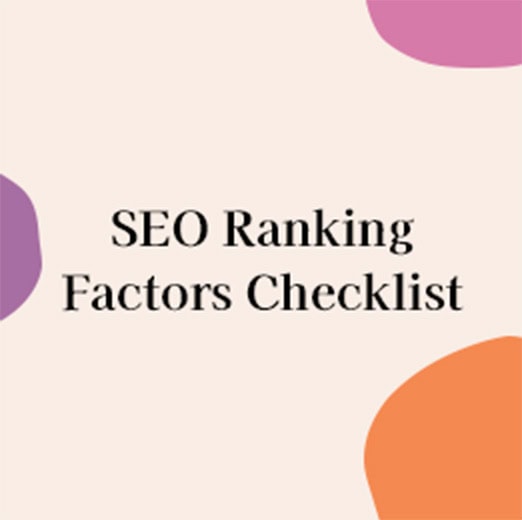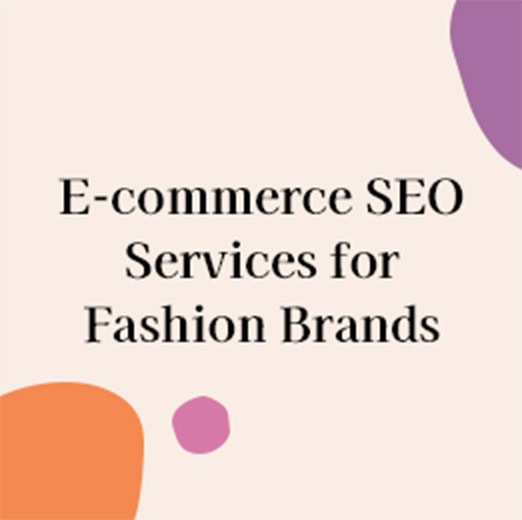Mastering On-Page SEO for E-Commerce: Rank Higher & Increase Organic Traffic
If you're running an online store and struggling to get your products seen on Google, it might not be your marketing budget or product quality holding you back. More often than not, it comes down to one thing: on-page SEO.
As an SEO specialist and fashion industry expert, I’ve helped countless e-commerce brands drive more website traffic and increase sales by fixing what’s happening on their ecommerce site. With over two decades of experience in the apparel industry, including running my own clothing line and consulting for independent fashion businesses, I understand the unique challenges brand owners face online. I combine real-world fashion industry knowledge with technical SEO expertise to deliver SEO strategies that are practical, ethical, and results-driven.
In this guide, I’ll walk you through the fundamentals of on-page SEO for e-commerce and the proven SEO best practices I use to help clients build long-term visibility and growth. This is part of a broader e-commerce SEO strategy that helps improve your performance in search engine results pages (SERPs).
What is On-Page SEO and Why It Matters for E-Commerce
On-page SEO refers to optimizing individual pages on your ecommerce website to rank higher and earn more relevant traffic from search engines. This includes everything from your product descriptions and meta tags to internal links and image alt text.
Unlike off-page SEO (like backlinks) or technical SEO (site speed, crawlability), on-page SEO is fully within your control. For e-commerce brands, it can be the difference between showing up on the first page of Google search results or being buried behind competitors' web pages.
E-commerce SEO is especially important for product and category pages, which are often the first touchpoints users see when browsing Google search results.
Key Elements of On-Page SEO for E-Commerce Websites: Developing an Ecommerce SEO Strategy
1. Keyword Research with Buyer Intent
Before you can optimize any page on your site, you need to know which search term your ideal customer is using. Keyword research tools can streamline and enhance your fashion e-commerce keyword research process. Google Keyword Planner, Ubersuggest, and Moz Keyword Explorer are popular SEO tools that provide valuable data on search volume, competition, and related keywords.
One of the most important aspects of keyword research is understanding buyer intent. Are your customers browsing, comparing, or ready to buy? Knowing this helps you choose keywords that match where they are in the purchasing journey. For example, someone's search query for "best tennis skirts for summer" is likely in research mode, while "buy pleated tennis skirt size medium" shows clear purchase intent.
For a deeper dive into how to conduct fashion e-commerce keyword research, including how to group and map your keywords to different ecommerce pages, read my article on Fashion E-Commerce SEO Keyword Research.
Focus on long-tail keywords that show clear purchase intent. For example, instead of "tennis dress," use "white tennis dress with pockets" if that’s what you sell. These more specific searches tend to convert better and are easier to rank for.
2. Optimized Title Tags and Meta Descriptions
Title tags are what appear in search engine results pages, so they need to be both keyword-rich and click-worthy to rank higher in Google. A good title should be under 60 characters and include your target keyword.
Meta descriptions should be under 150 characters and provide a compelling reason to click. This is where many e-commerce brands miss out by leaving them blank or stuffing them with vague phrases.
3. Structured Headings (H1-H3)
Your page should only have one H1—usually the product or collection name. Use H2 and H3 tags to organize the rest of the content. Search engines use these to understand the hierarchy and relevance of the information.
4. Product and Collection Page Content
Avoid thin content at all costs. Every product and collection page should have unique, descriptive copy. You can talk about fabric, fit, styling suggestions, and care instructions; any information that you think your customers would like to know.
Beyond just filling in text, your product page content should be structured to guide shoppers and search engines alike. This includes optimized headlines, bullet points for scannability, and addressing common questions to reduce friction in the buying process. Strong on-page content also enhances the overall shopping experience, leading to lower bounce rates and higher conversions.
I also recommend linking between related products or from a collection page to its featured items. This keeps users engaged and helps search engines crawl deeper into your site.
If you're not sure where to begin or want to ensure your product pages are SEO-friendly, check out my full breakdown in Product Page SEO: How to Turn Traffic into Sales with Smarter Content. I cover how to create compelling, optimized content that ranks well and converts browsers into buyers.
5. Image Optimization
Images are critical for ecommerce sites, but they can also slow down your site and hurt rankings if not optimized. Use descriptive file names that clearly indicate the product or context, such as white-tennis-dress-backview.jpg instead of IMG_1234.jpg. This helps search engines understand the image content and improves accessibility.
Alt text should be keyword-rich but still describe the image naturally. For example, instead of using generic alt text like "product image," use something like "white sleeveless tennis dress with pleated skirt." This ensures your visuals support your overall search engine optimization strategy while helping visually impaired users navigate your site.
To maintain fast load times, aim to keep image file sizes under 200KB when possible. Use tools like TinyPNG or Squoosh to compress images without noticeable quality loss. Modern formats like WebP also offer superior compression and faster performance compared to JPEG or PNG.
Consider implementing lazy loading so that images only load when they enter the viewport. This can significantly improve page speed and user experience, especially on mobile devices.
6. URL Slugs and Internal Linking
Keep URLs clean and keyword-focused. Avoid unnecessary words, numbers, or special characters. For example:
Bad: yourstore.com/product1234
Better: yourstore.com/white-tennis-dress
Internal linking also plays a major role in improving your e-commerce SEO. Link from your blog to product pages, from collections to bestsellers, and from sold-out items to similar alternatives. Linking across pages helps build site structure and spreads link equity across your ecommerce SEO architecture.
Common On-Page SEO Mistakes to Avoid
- Keyword stuffing: Overusing the same keyword makes your page hard to read and can trigger penalties.
- Duplicate content: Don’t copy manufacturer descriptions or repeat text across pages.
- Missing metadata: Leaving out title tags and meta descriptions is a lost opportunity.
- Poor mobile usability: If your page isn't mobile-friendly, you'll lose both rankings and conversions.
Real-World Example: A Fashion Brand’s On-Page SEO Overhaul
One of my clients, a luxury women’s sportswear brand, came to me with great product photos and design—but poor organic visibility. After an on-page SEO audit, I rewrote their product titles, added keyword-optimized descriptions, and restructured their internal linking to enhance SEO performance.
Within three months, their organic traffic increased by 38%, and their bounce rate dropped significantly as shoppers stayed longer on the site. This improvement in ecommerce SEO translated directly into higher revenue.
Glynis Tao’s SEO Best Practices for Continuous On-Page SEO Success: How to Optimize to Rank Higher
- Audit regularly: Revisit and optimize your product pages every season or after launching new collections to continuously improve on-page optimization. Review performance metrics in tools like Google Analytics and Google Search Console.
- Use SEO tools: Identify ranking gaps, technical issues, and keyword performance using SEO platforms tailored to ecommerce websites.
- Stay user-focused: SEO isn’t just for bots. Write content that educates, inspires, and helps your customer make a decision. Valuable content for customers will organically bring traffic to your site and increase organic search.
- Follow best practice: Ensure that every page on your site follows up-to-date on-page SEO standards, including fast load times, optimized mobile layouts, and accessible content.
Conclusion: On-Page SEO is a Foundation, Not a One-Off
If you're serious about growing your e-commerce brand, on-page SEO needs to be part of your day-to-day operations. It lays the foundation for long-term visibility, traffic, and conversions.
Start with small changes—optimize a single collection page or rewrite your top-selling product description. Then build from there.
Need help optimizing your product and category pages for better rankings and conversions? Book a 1:1 SEO consultation with Glynis Tao today and take the next step in mastering SEO for e-commerce websites.




